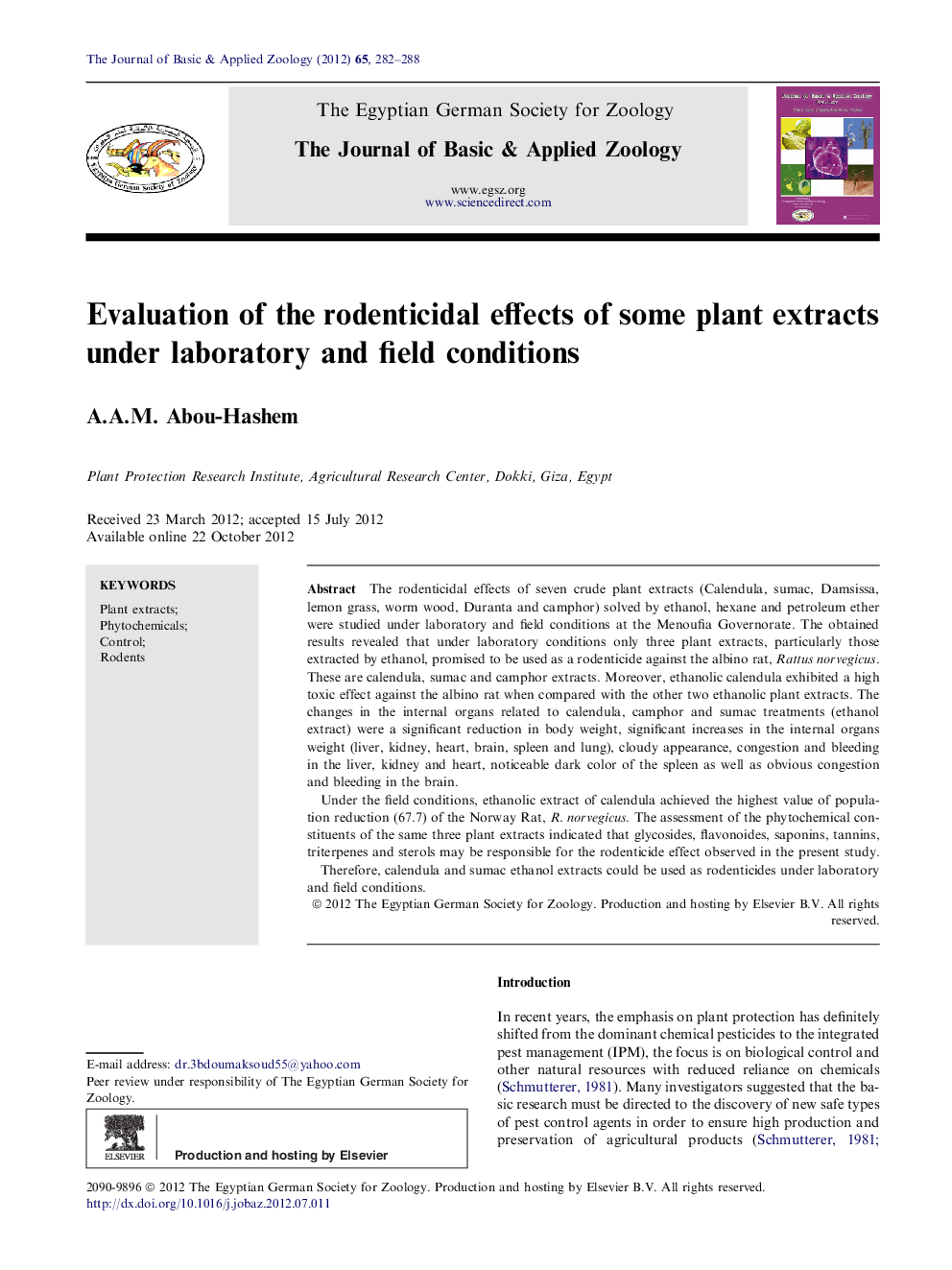| Article ID | Journal | Published Year | Pages | File Type |
|---|---|---|---|---|
| 4493490 | The Journal of Basic & Applied Zoology | 2012 | 7 Pages |
The rodenticidal effects of seven crude plant extracts (Calendula, sumac, Damsissa, lemon grass, worm wood, Duranta and camphor) solved by ethanol, hexane and petroleum ether were studied under laboratory and field conditions at the Menoufia Governorate. The obtained results revealed that under laboratory conditions only three plant extracts, particularly those extracted by ethanol, promised to be used as a rodenticide against the albino rat, Rattus norvegicus. These are calendula, sumac and camphor extracts. Moreover, ethanolic calendula exhibited a high toxic effect against the albino rat when compared with the other two ethanolic plant extracts. The changes in the internal organs related to calendula, camphor and sumac treatments (ethanol extract) were a significant reduction in body weight, significant increases in the internal organs weight (liver, kidney, heart, brain, spleen and lung), cloudy appearance, congestion and bleeding in the liver, kidney and heart, noticeable dark color of the spleen as well as obvious congestion and bleeding in the brain.Under the field conditions, ethanolic extract of calendula achieved the highest value of population reduction (67.7) of the Norway Rat, R. norvegicus. The assessment of the phytochemical constituents of the same three plant extracts indicated that glycosides, flavonoides, saponins, tannins, triterpenes and sterols may be responsible for the rodenticide effect observed in the present study.Therefore, calendula and sumac ethanol extracts could be used as rodenticides under laboratory and field conditions.
